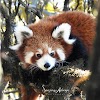The Common Kingfisher is a small kingfisher among the seven subspecies. It is also familiar with Eurasian kingfisher and river kingfisher, two names . The Common kingfisher lies in Kingdom: Animalia, Phylum: Chordata, Class: Aves, Order: Coraciiformes, Family: Alcedinidae,Subfamily: Alcedininae, Genus: Alcedo, Species: A. atthis. There are 87 species of kingfisher.
Common kingfisher in Koshi Tappu wildlife Resurve, Nepal
The Common kingfisher which we found in bank of koshi river and its adjacent are the most colorful birds and has beautiful brilliant plumage, though, despite its extraordinary colors. The creature looks shy in nature that means it is not often seen. The looks is so beautiful that, its upper parts are bright blue and its underparts a rich chestnut-red. The Male and female are generally similar but the females have a bill with a red base, whereas males have one that is completely black. The average weight is between 26-39 gram and the average length is 17 cm. Common kingfishers function a decent indicator of the health of an ecosystem. As they go after small aquatic animals, toxins within the water affect them severely. a robust kingfisher population therefore usually means a healthy habitat.
These birds are monogamous and seek a fresh mate every year. They nest on their own. The male feeds the female before copulation, usually a fish. Two to three clutches of eggs are laid in a year. Nests are on sandy banks along streams. Sometimes they use a hole in an exceedingly very wall or a rotten stump, or a termite mound, where they dig a tunnel and at the highest create a nest chamber. Male and female works together to excavate 50 to 90 cm long burrow, taking turns. The eggs are laid and incubated around 19 to 21 days, by both male and female. Normally, the female does the brooding in night and both male and female pair during the day. Four days later they create their first dive. As the baby birds grows very soon they become independent and leave the territory where they were born and starts their new life.
The Common kingfisher is under threat from river pollution, disturbances and human developments in its natural habitat. it is also at risk of bouts of severe winter weather, because it's unable to feed when bodies of water freeze over.






0 Comments